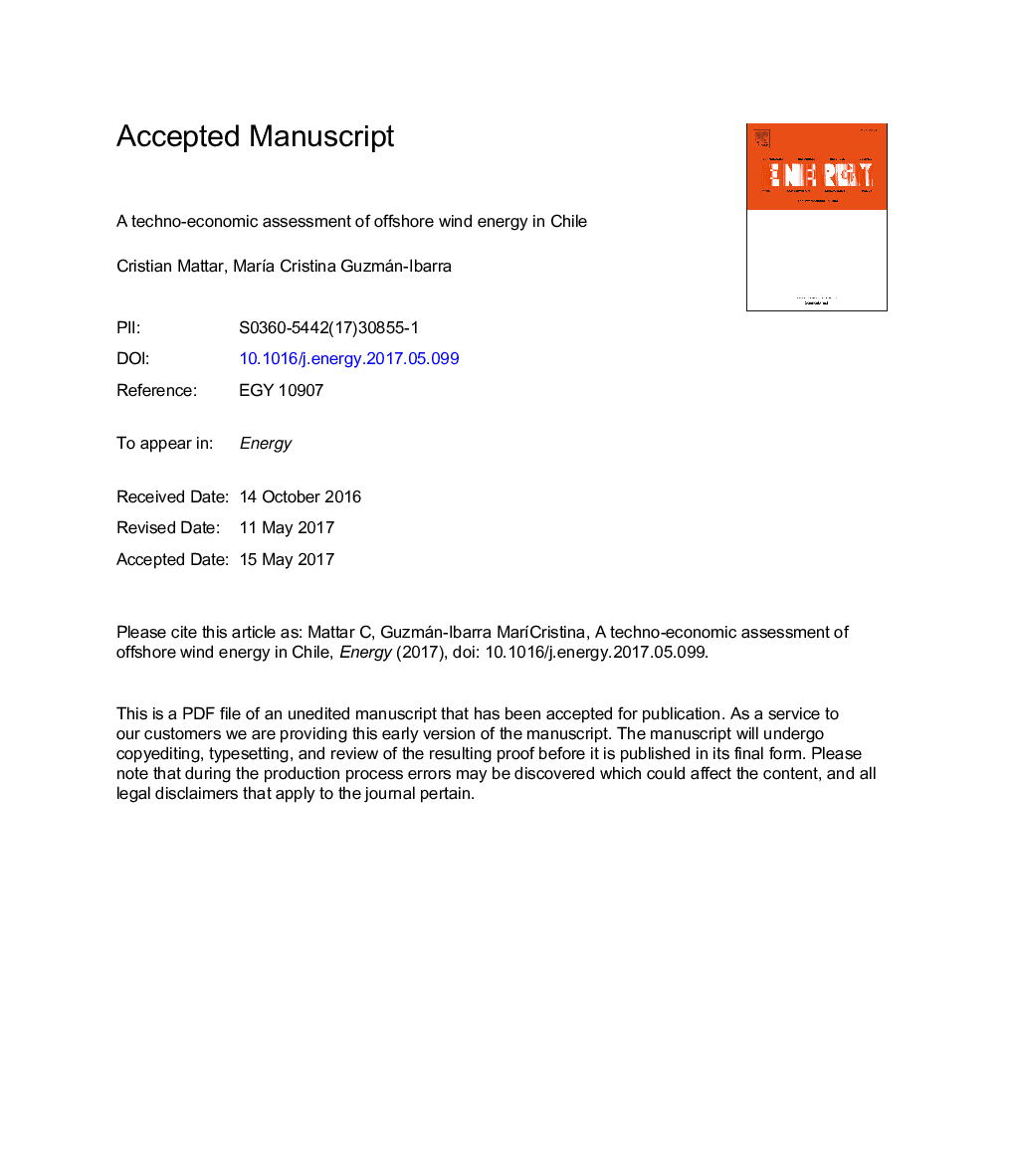| Article ID | Journal | Published Year | Pages | File Type |
|---|---|---|---|---|
| 5476551 | Energy | 2017 | 44 Pages |
Abstract
Offshore wind energy potential and its technical and economic feasibility were determined in Chile. Wind speed data from ERA-Interim reanalysis 10 m above the sea surface between 1979 and 2014 was used. The capacity factor and performance of the V164-8.0 MW wind generator was also determined. Using this information along with data from other studies, the following economic indicators were calculated: Levelized Cost Of Energy (LCOE), Net Present Value (NPV), Internal Rate of Return (IRR) and Pay-Back (PB). The results show that the area between 45 and 56°S has the highest values in terms of both power density (â¼3190 W/m2) and capacity factor (â¼70%), as well as the lowest LCOE values (72-100 USD $/MWh). The area between 30 and 32°S was estimated to be the most suitable area for implementing an offshore wind project because of its wind power density (between 700 W/m2 and 900 W/m2), capacity factors between 40% and 60%, LCOE between 100 and 114 USD$/MWh. This work shows how important studying Chile's offshore wind power is for to be used and for removing barriers to current knowledge about this renewable energy and the benefits it would bring to Chile's power array.
Keywords
Related Topics
Physical Sciences and Engineering
Energy
Energy (General)
Authors
Cristian Mattar, MarÃa Cristina Guzmán-Ibarra,
